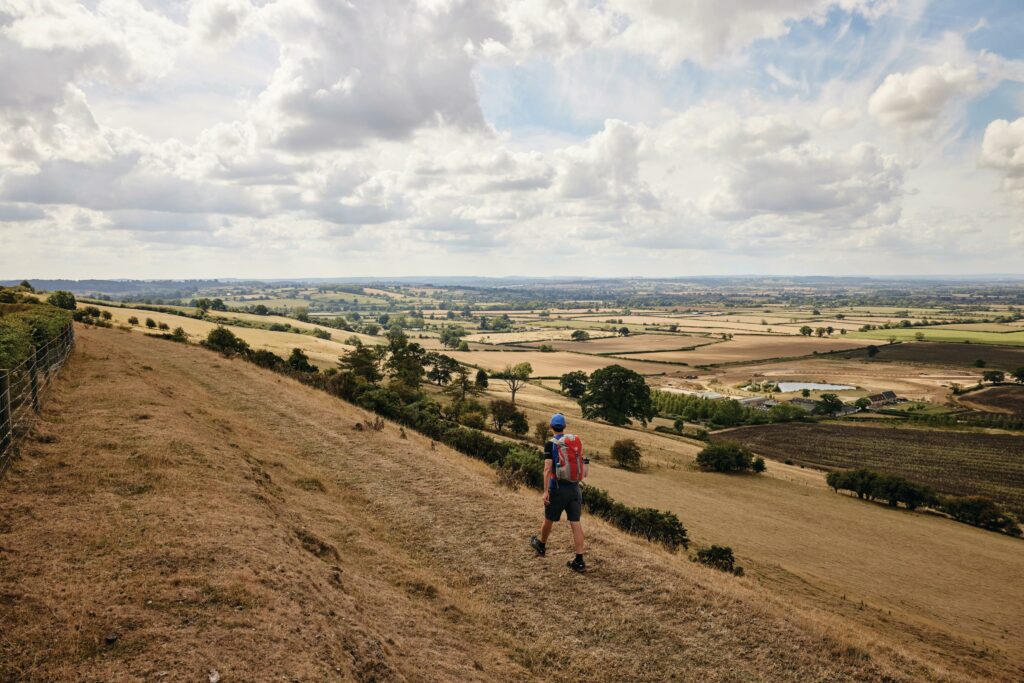
WALKING SPECIAL: DISCOVER
Between Western shores
Dixe Wills forges a thrilling new West Country walking route – coast-to-coast from Somerset to Dorset
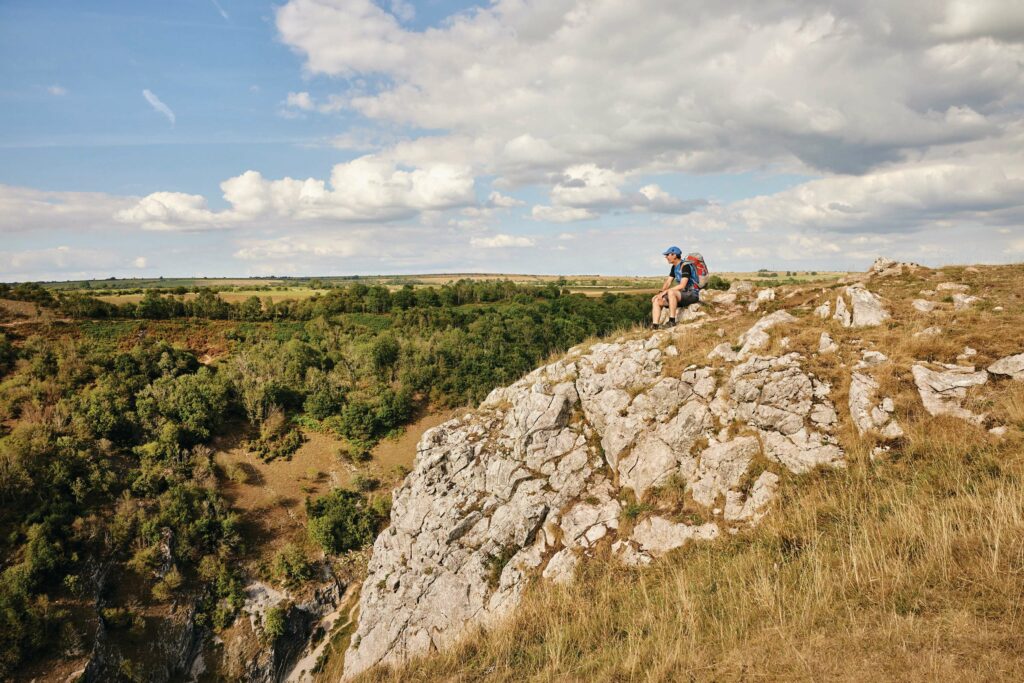
“You won’t find this coast-to coast walk on any map of south-west England because this is one I cooked up myself”
I thought I knew the Somerset Levels. I’ve spent many a happy day walking or cycling across this extraordinary flood plain, drained first by the Romans (well, probably), then more extensively by medieval monks. Barring the distinctive mound of Glastonbury Tor, I’ve always thought of the Levels as fen-flat. How wrong could I have been?
Pausing for a sunny picnic high up on Corton Ridge, near the Dorset border, I looked out on a vast ocean of parched greens and sun-dried ochres, interrupted by myriad little ridges and hummocks (apparently known as ‘burtles’ in these parts) and the immense hulk of Cadbury Castle hillfort.
This was just one of several welcome surprises that came my way on my 100-mile hike from Weston-super-Mare to Weymouth. You won’t find this coast-to coast walk on any map of south-west England because this is one I cooked up myself. With a lack of invention bordering on the heroic, I’m calling it the Wewey.
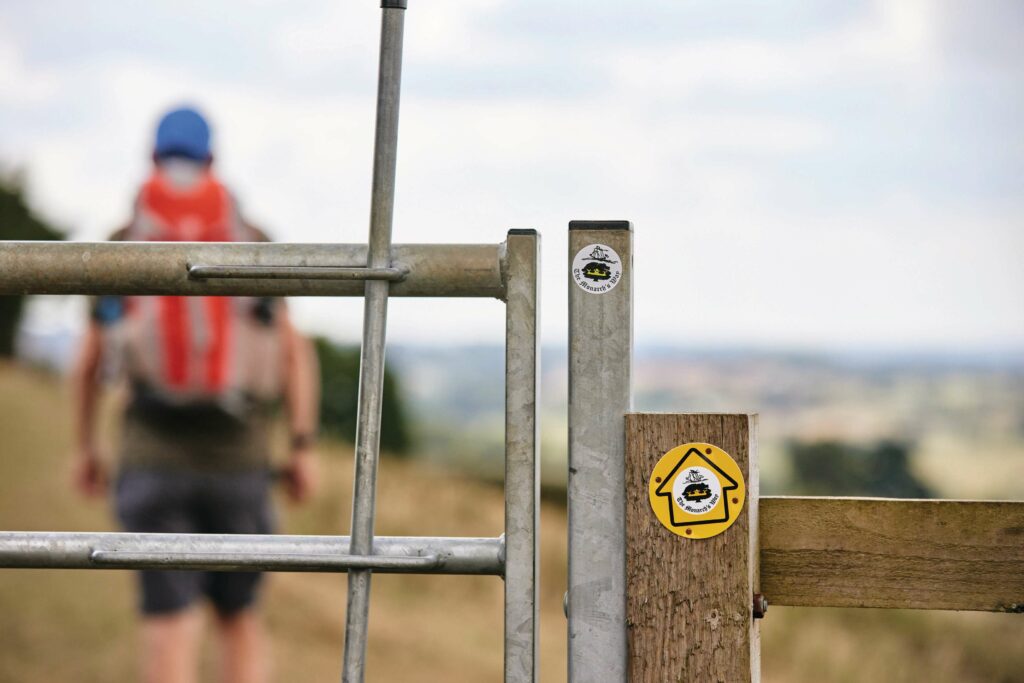
Over six days I was treated to a grand miscellany of sights and sounds. After skirting the Somerset Levels, I found myself climbing in and out of gorges, meandering about a tiny picturesque city, passing through villages little touched by the ravages of time, greeting throngs of inquisitive sheep (is it me or are they less afraid of people than they used to be?) and taking in the nation’s most extraordinary beach before arriving at Weymouth, as busy as an ants’ nest but with more ice cream cones. There wasn’t a day without a hill of some sort, but none were particularly daunting and there were always views at the top if I fancied taking a breather.
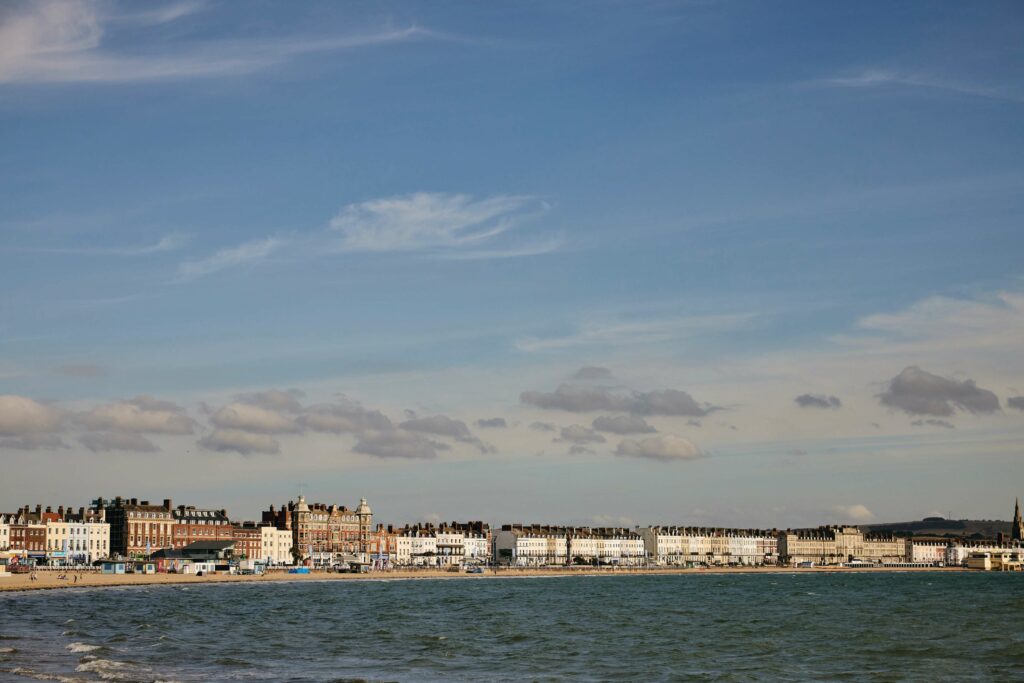
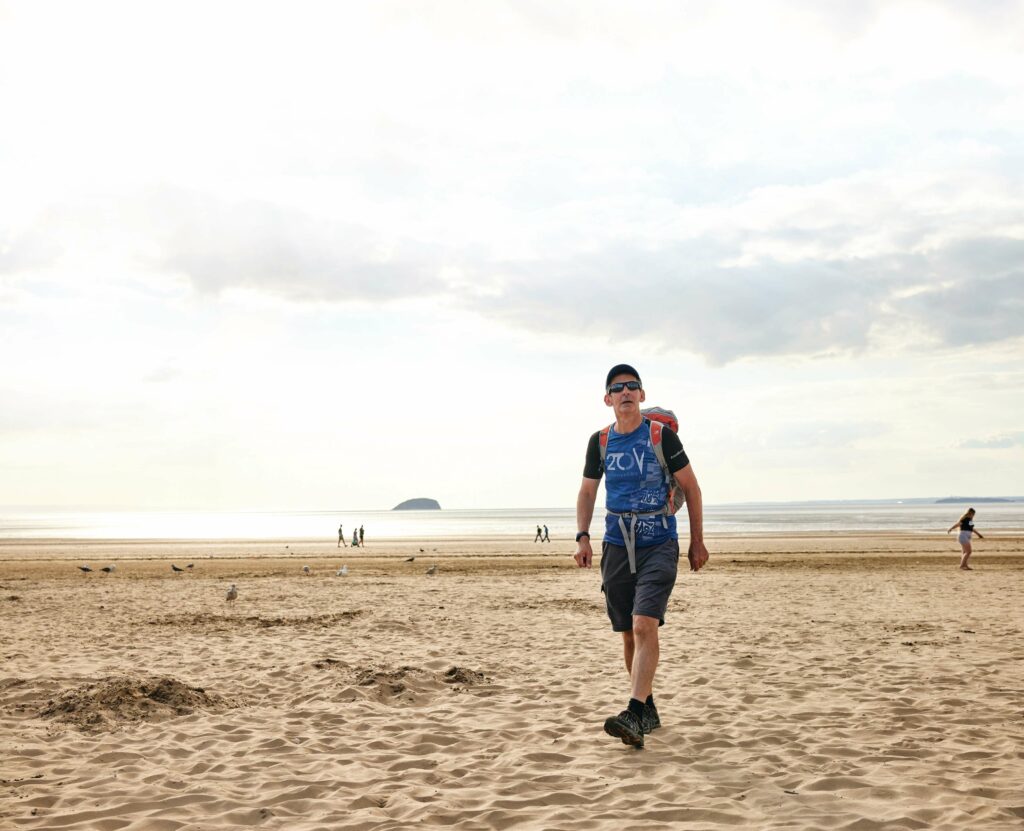
PATCHWORK PATH
But why invent a new route at all when Britain is criss-crossed with apparently numberless waymarked trails? Well, that’s a good question. I wasn’t exactly pioneering a new route across the Andes. However, the thought that I was very probably the first person ever to cross this corner of England this particular way did make it feel slightly more of an escapade. In fact, I had the best of both worlds – to avoid having to consult a map all the time, I cheekily piggybacked sections of a host of waymarked routes almost the whole way across.
I started on the North Somerset Tidal Trail, jumped onto the West Mendip Way towards Wells – briefly diverting around the more scenic southern edge of Cheddar Gorge – then joined the Monarch’s Way (following Charles II’s escape route) to Sandford Orcas, the Macmillan Way to Abbotsbury, the South West Coast Path and finally the England Coast Path. Navigation thus became a simple case of remembering which symbols I was looking out for.
The Macmillan Way is the creation of the eponymous cancer-support charity, so I sent off a little donation to thank them for their waymarking efforts.
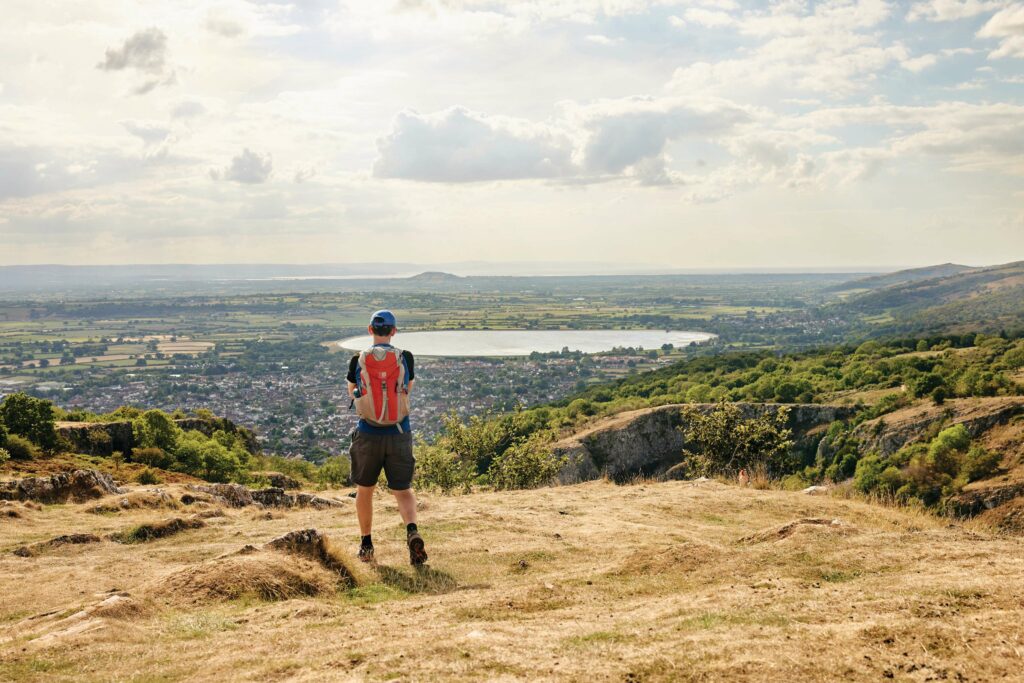
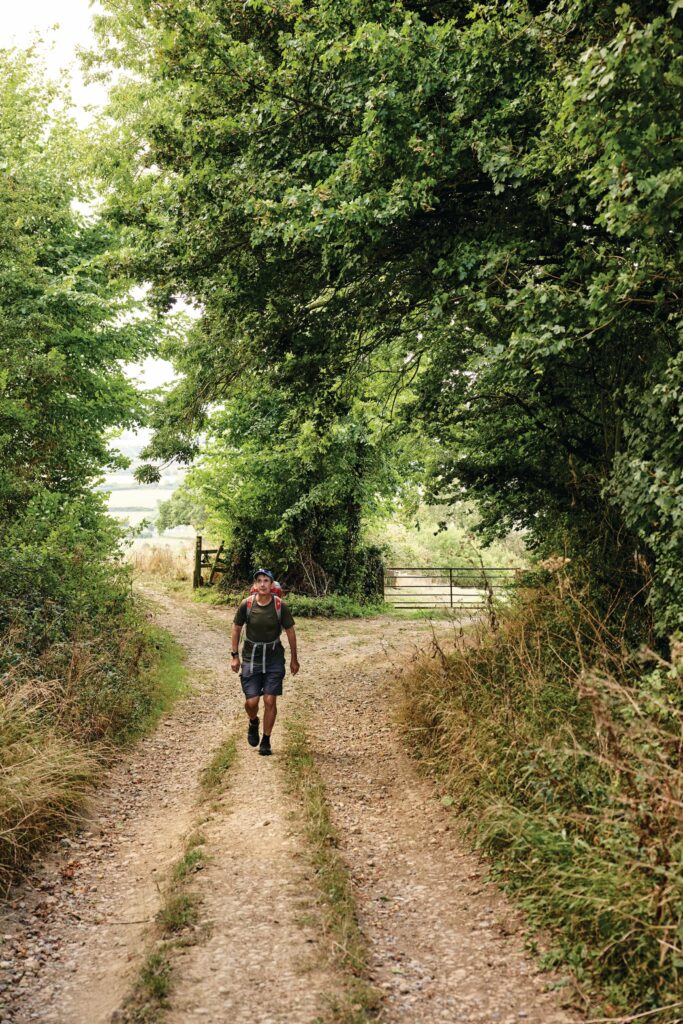
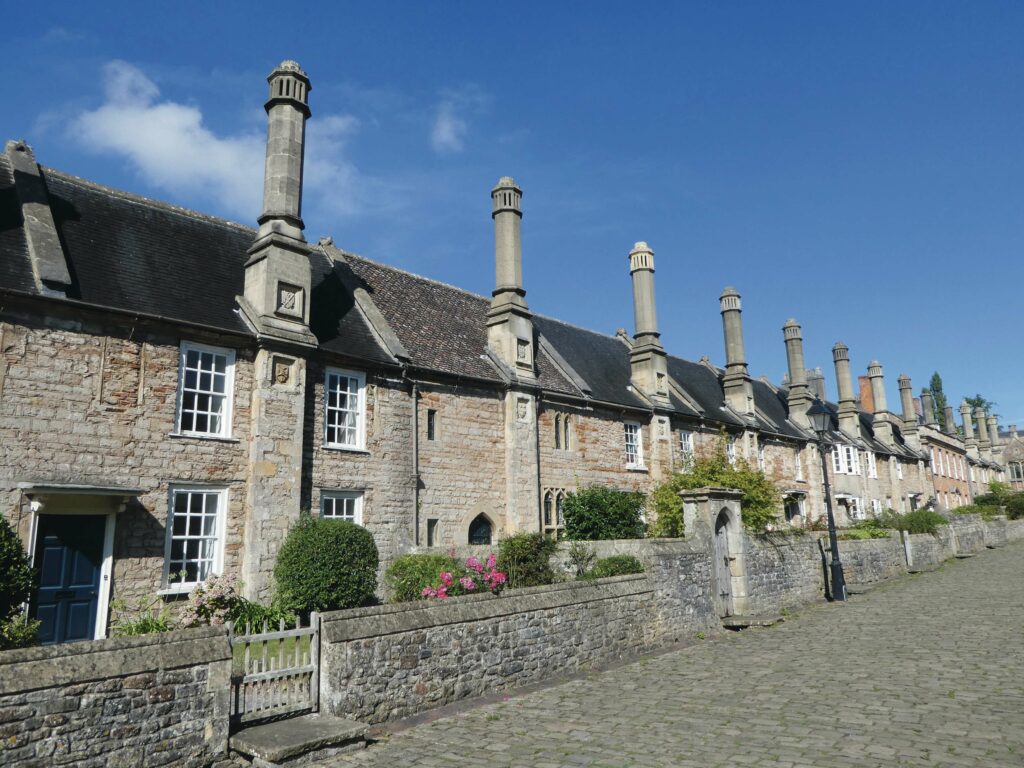
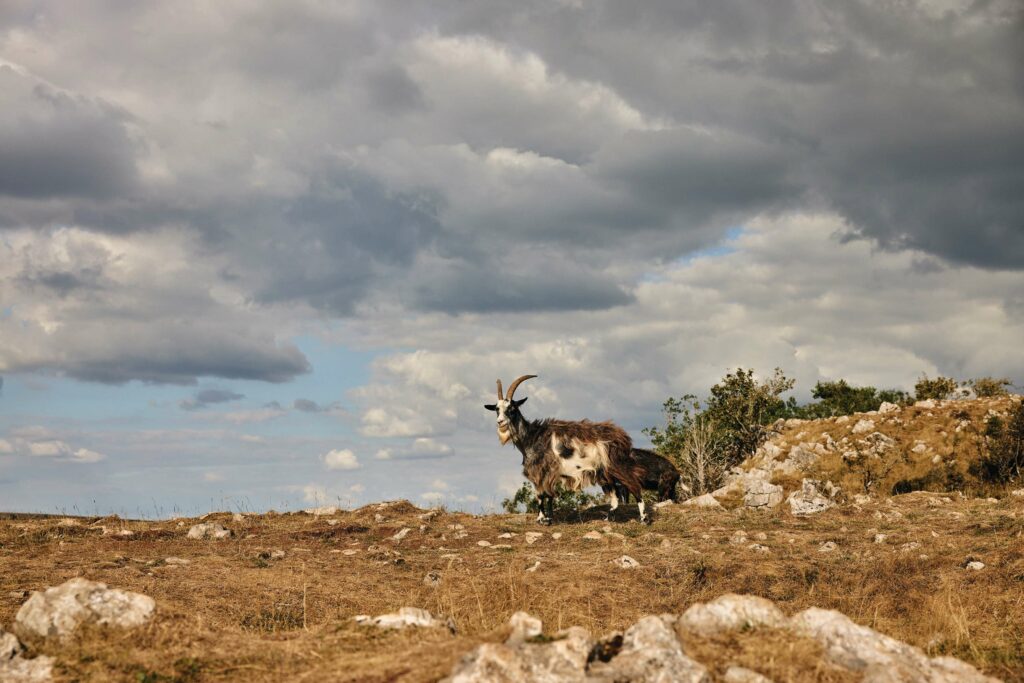
LIGHTENING THE LOAD
The amount of enjoyment I get from a hike is usually in inverse proportion to the weight on my back. I thus limited myself to camping essentials, a few clothes, toiletries, water and some snacks. However, I soon wished I’d taken some binoculars in order to identify some of the higher flying birds I saw.
I still felt a trifle overburdened as I strolled from Weston-super-Mare station to the seafront to play dodgems on the prom with the lightly clad holiday crowds. My original plan had been to dip a ceremonial toe in the sea, as is customary on a coast-to-coast walk. However, the tide appeared to have fled halfway to Steep Holm – the rugged little isle that shares the guarding of the mouth of the Severn with her sister Flat Holm – so I contented myself with giving the distant waves a wave. I weaved my way along the coast and the crowds began to thin until my only company was some enthusiastic sandyachters speeding back and forth along the strand. Turning inland at Uphill, I was soon climbing up Bleadon Hill and enjoying my first view of the unmistakable fried egg form of Brent Knoll to the south. This was the beginning of the Mendip Hills, whose ridges would keep me satisfyingly high and offer glorious panoramas of the Somerset Levels most of the way to Wells, two days’ walk away. They would also supply me with my first night’s wild camp, in a lofty eerie hidden in a bracken glade.
“I was soon enjoying my first view of the unmistakable fried egg form of Brent Knoll to the south”
Rising just after dawn, I watched transfixed as a hot air balloon melted into the haze far below me on the plain.
Cheddar Gorge I knew well, and provided both the most taxing climb and favourite wildlife encounter of the trip: communing at close quarters with a wild nanny goat and her two kids. By contrast, Ebbor Gorge, which I descended just afterwards, was new to me and I had its lush woodland and blissfully shady paths to myself.
I was tremendously lucky with the weather. So when I reached Wells, the day was still far too agreeable to spend it inside the cathedral or the bishop’s palace. I therefore took to sauntering around the miniature city’s venerable buildings and drinking in the friendly hubbub of the open-air market.
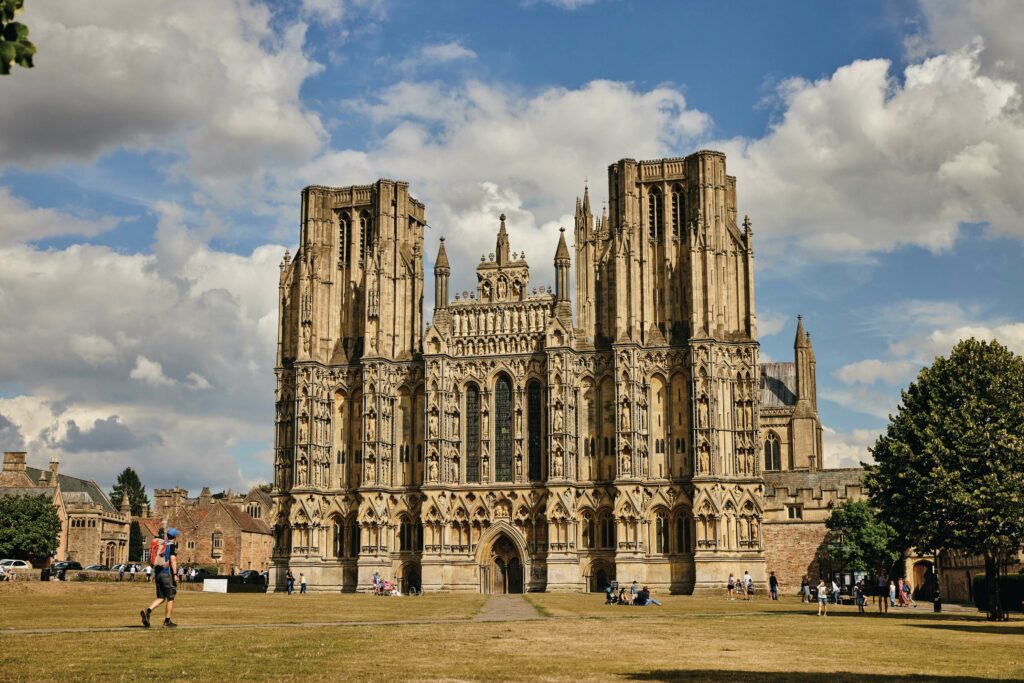
GOOD SLEEPS
Securing accommodation for the five nights of the walk had not proved too much of a difficulty. I spent two nights wild camping, one night at a campsite and one at a pub. And in Wells, I treated myself to a little luxury at the 600-year-old Swan Hotel. A blue plaque declared that previous guests had included Henry VII, Winston Churchill, George Bernard Shaw and Queen Anne of Denmark. Of course, it’ll have to be updated now that I’ve stayed there.
MORE BRITISH COAST-TO-COAST WALKS
At 182 miles, Alfred Wainwright’s classic Coast to Coast Path across northern England is claimed to be the world’s most popular long-distance footpath. Cornwall boasts two much shorter sea-to-sea paths: the Smugglers Way (37 miles) and the Saints Way (30 miles).
You can cross Scotland on the 79-mile Great Glen Way, taking in the length of Loch Ness; via the lesser-known Scottish Coast to Coast, 133 miles from Oban to St Andrews; or along the ancient Antonine Wall across the Central Belt (71 miles).
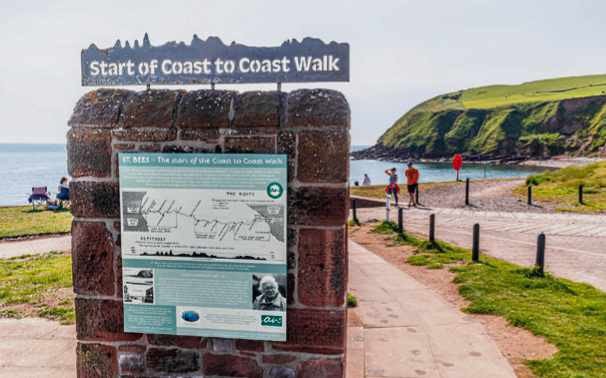
Or for a real challenge, try the 280-mile Cross Britain Way, which links Boston, Lincolnshire to Barmouth, Gwynedd and was created by Macmillan Cancer Relief.
Visit the Long Distance Walkers Association for details. ldwa.org.uk
The next few days were characterised by long time-fuzzy spells of unhurried hiking amid sheep-filled fields and prematurely golden woods, through somnolent villages and along even quieter hedge-bound lanes. And in between there burst little snapshots of joy. A box of apples in Sherborne with a note that read: “Avail yourselves of windfall eaters.” (Reader, I did.) A fairy ring of puffballs. The biggest and most quarrelsome flock of goldfinches I have ever seen. A leisurely picnic breakfast in thatched Melbury Osmond by the village’s reliable foursquare church. It fair gleamed like burnished bronze in the low sunlight. Thomas Hardy’s mother was married there, I learned, and Melbury appears in his novel The Woodlanders as ‘Little Hintock’. I cannot think it has changed very much since. In Melbury Park, I paused in the early morning sunshine to watch a stand of trees alive with swifts, which made repeated circuits of the airspace above my head.
From time to time I even met humans. At little North Wootton, banners proclaimed ‘Harvest Home’ and stalls were half-ready for a fête. The clink of cutlery drew me into a bijou village hall where three dozen villagers were eating lunch at long trestle tables.
“If you look around most agricultural villages,” organiser Marcus Laing began, “they’ll have had a harvest celebration unrelated to the church. I suspect our harvest home is centuries-old, in one form or another.” However, he lamented the fact that participant numbers had dwindled in recent years. But a greater tragedy befell me: Marcus offered me a free lunch but I had already eaten.
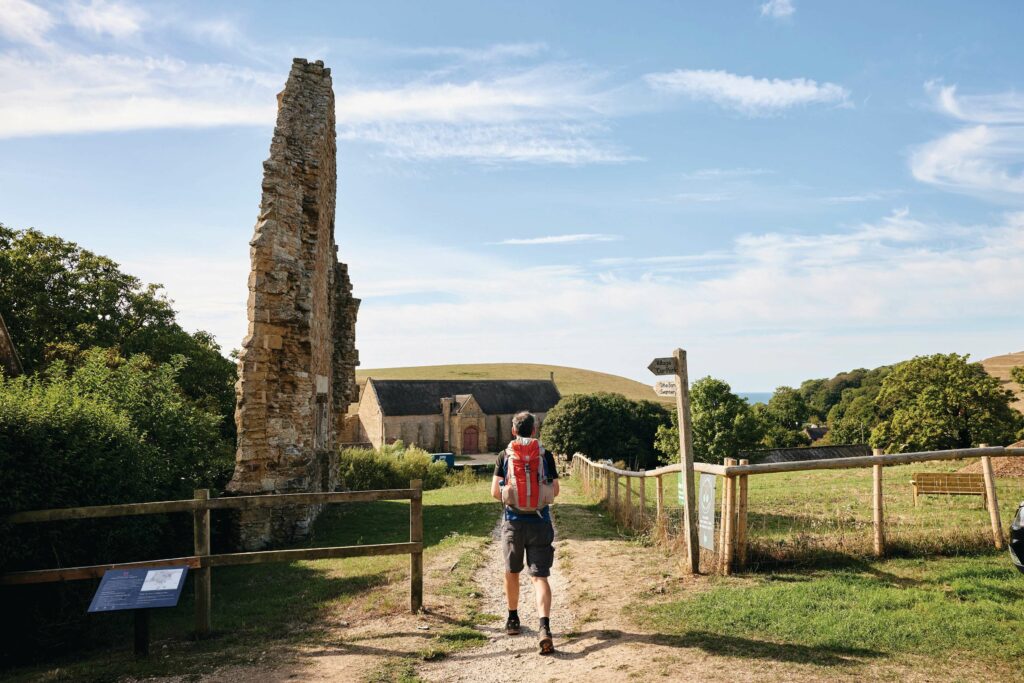
SWAN CENTRAL
Further south, I had a fascinating chat with Kevin Butler, who has worked at Abbotsbury Swannery – “the only managed colony of mute swans in the world” – for 10 years. We strolled to the shore of The Fleet, England’s largest lagoon, and he reeled off some facts. The swannery was probably created by 11th-century Benedictine monks. “They were meant to be vegetarians,” he said, “but swan meat tasted ‘fishy’ so it was allowed. However, the swans would have been here long before humans.” Adult swans can drink seawater but it kills cygnets. And the swannery staff ‘get walloped on a daily basis’ but no one has sustained a broken arm. Yet.
“I paused in the early morning sunshine to watch a stand of trees alive with swifts”
My journey went out on a spectacular high – a march, with occasional alpacas, along the coast path above Chesil Beach from the hilltop ruin of St Catherine’s Chapel all the way to Weymouth. Eighteen miles long and formed of an estimated 18 billion pebbles, the beach is an extraordinary sight. I discovered that it’s on the move, too: storms are pushing it about five metres inland every century.
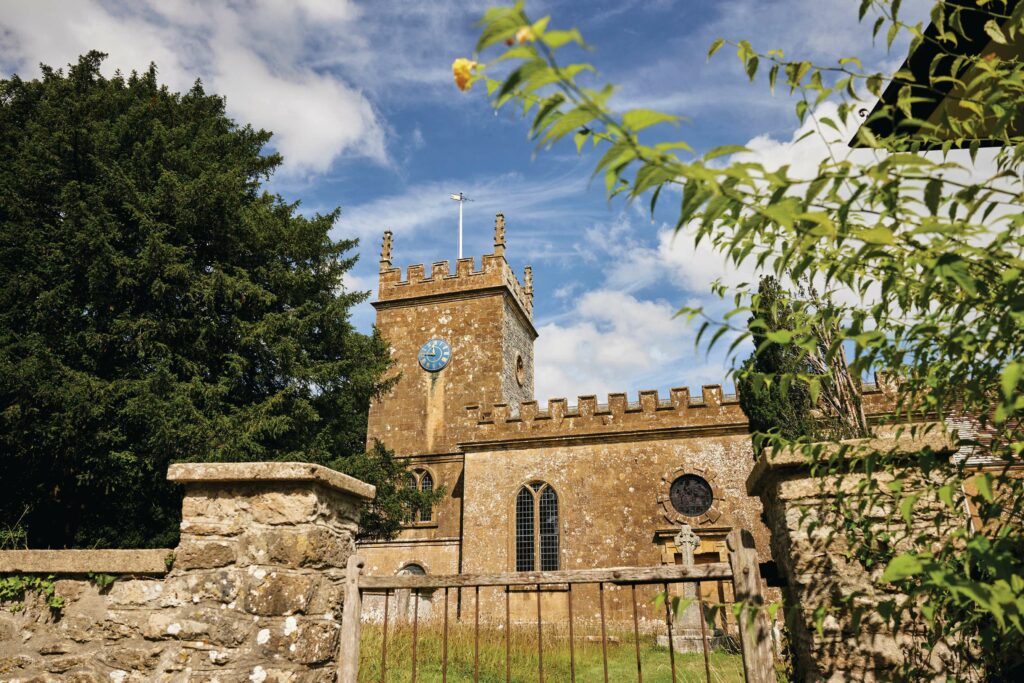
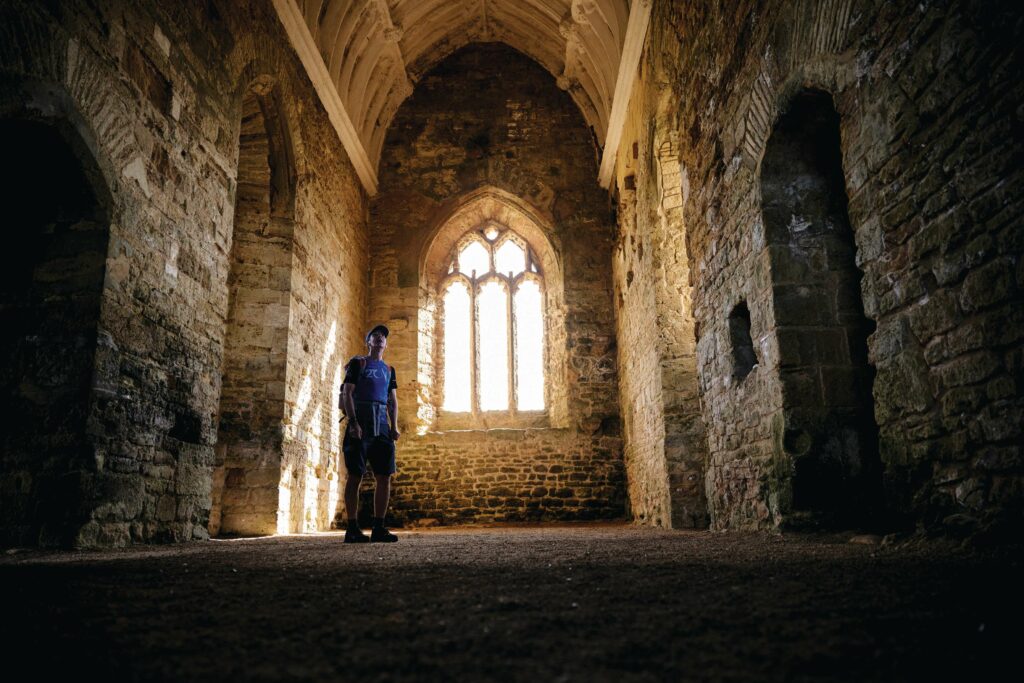
As the sun began its descent, I found myself in Weymouth’s lofty Nothe Gardens. Down below lay a beachside funfair and its terrifying-looking chair-o-planes. After six days of being kissed by the sun, I was back in the land of kiss-me-quick. But here the tideline was not nearly so distant as at Weston and I was soon solemnly dipping the toes of my boots into the foamy brine.
The end of a satisfying walk is always a bittersweet moment, for along with the glow of completion comes the sadness that the adventure is over. I consoled myself with a resolution: one day I would jump back on the train again and walk the Wewey in reverse. Anyone for the Weywe?
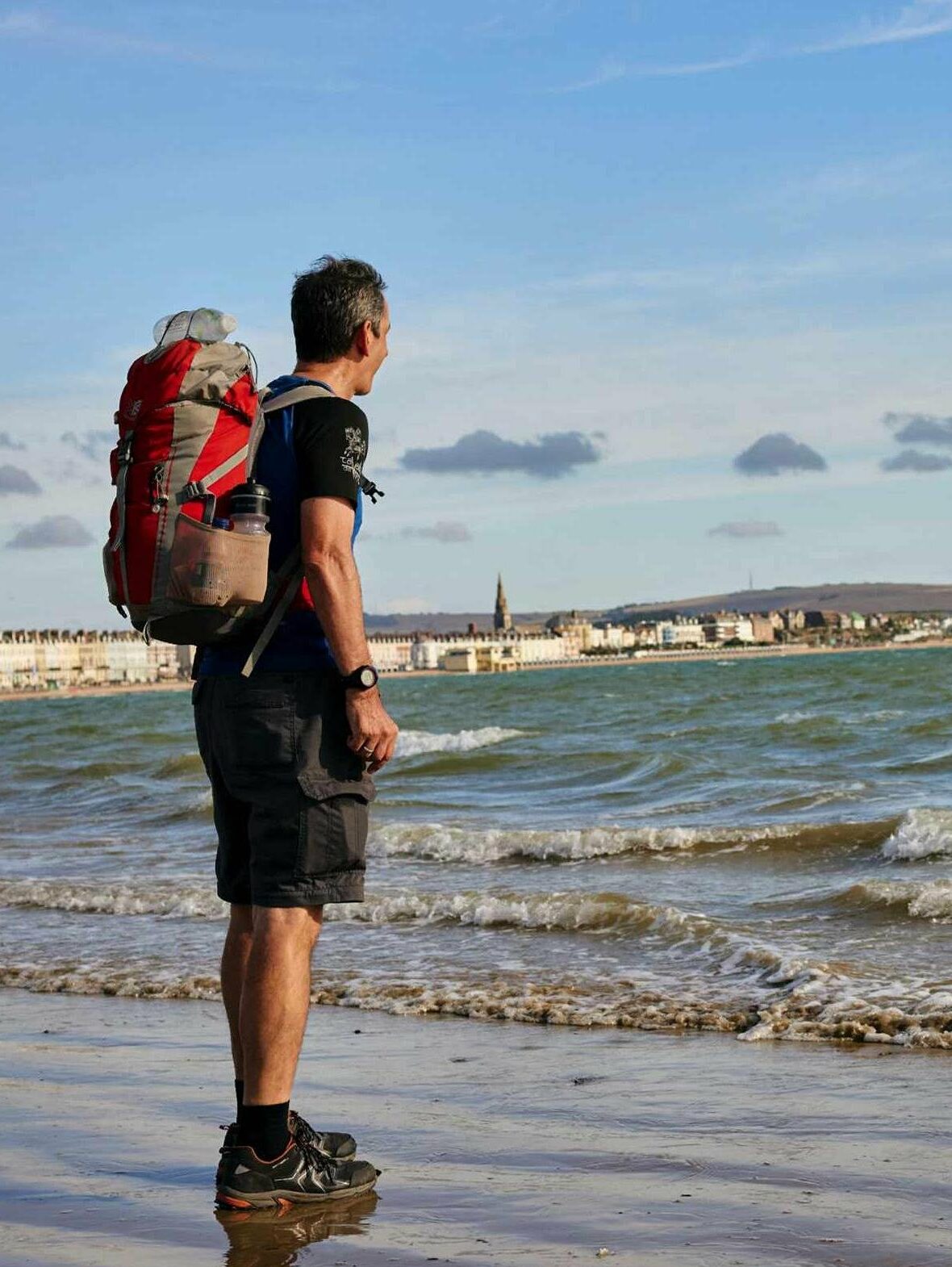

Dixe Wills is a non-flying travel writer who specialises in eco-friendly adventures. His books include The Z-Z of Great Britain, Tiny Islands, Tiny Churches, At Night, The Armchair Naturalist and The Wisdom of Nature.
NOW WALK THAT WEWEY
Where to stay, visit, eat and drink by Dixe Wills
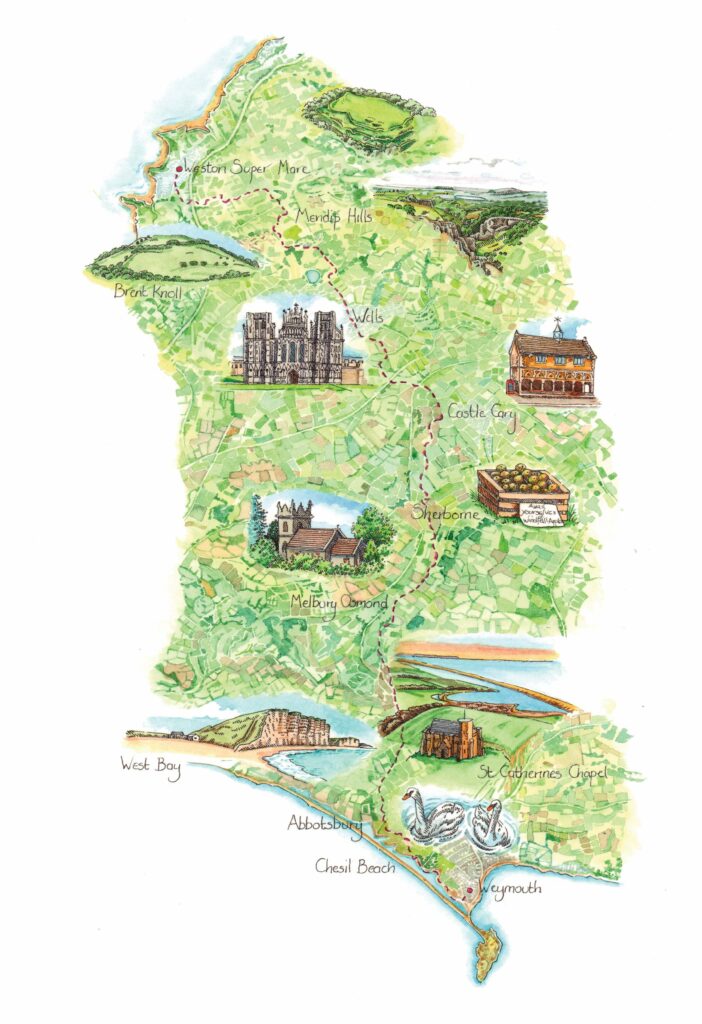
TRANSPORT
One of the joys of this walk is that there are railway stations at both ends. Both Weston-super-Mare and Weymouth enjoy frequent services towards London and the West Country. Great Western Railway (gwr.com) serves both stations.
ACCOMMODATION
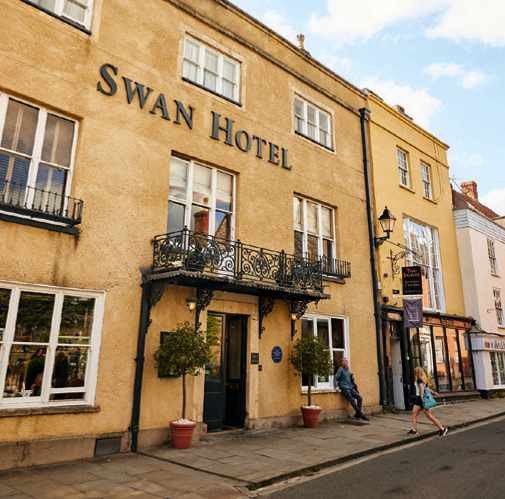
The Swan Hotel, Wells
Located opposite the cathedral, this 14th-century coaching inn makes for a luxurious treat while remaining very reasonably priced. swanhotelwells.co.uk
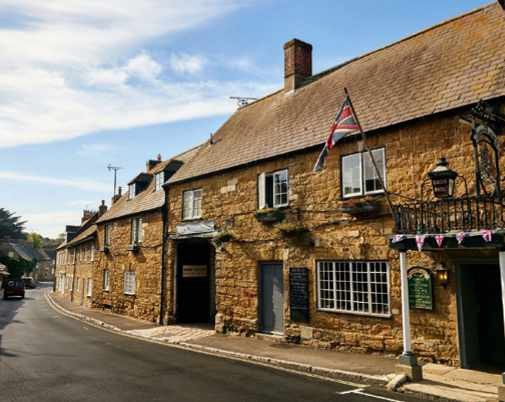
Brook House Inn
Just outside Castle Cary, the Brook House Inn has a small campsite attached and offers well-maintained facilities and tasty yet inexpensive meals in the bar. brookhouseinntouringpark.co.uk
Ilchester Arms
A cosy family-run pub in Abbotsbury with a fire, cracking views of St Catherine’s Chapel from the beer garden, and comfortable airy rooms. theilchester.co.uk
NOTABLE TOWNS AND VILLAGES
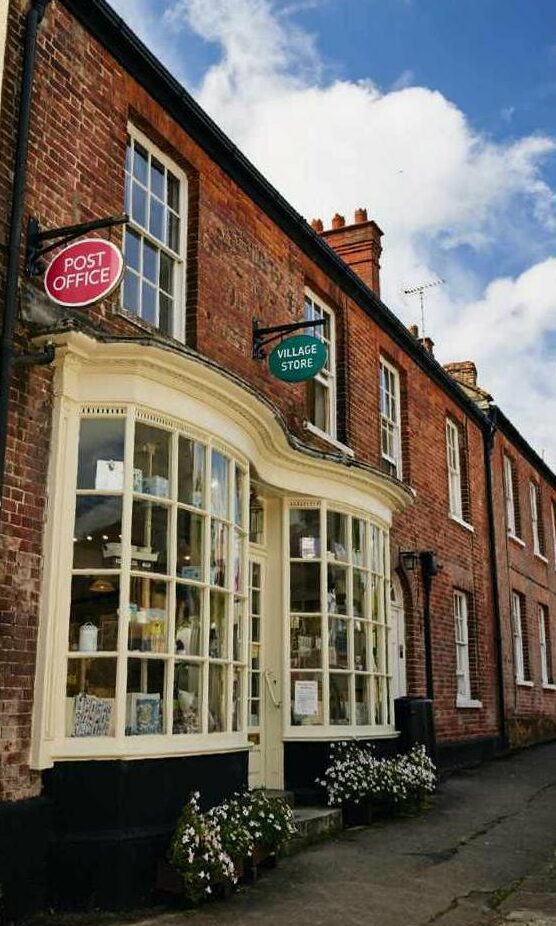
There’s a good mix of picturesque towns and villages dotted along the way. Major centres such as Weston-super-Mare, Cheddar, Wells, Sherborne and Weymouth provide a variety of services and accommodation, while smaller places such as Castle Cary, Evershot and Abbotsbury offer a more limited range.
Villages en route that possess a handy shop selling food and drink include Draycott, North Cadbury, Yetminster, Evershot, Cattistock (whose store has a tearoom with take-away), Maiden Newton and Abbotsbury. Useful websites are visitsomerset.co.uk and visit-dorset.com
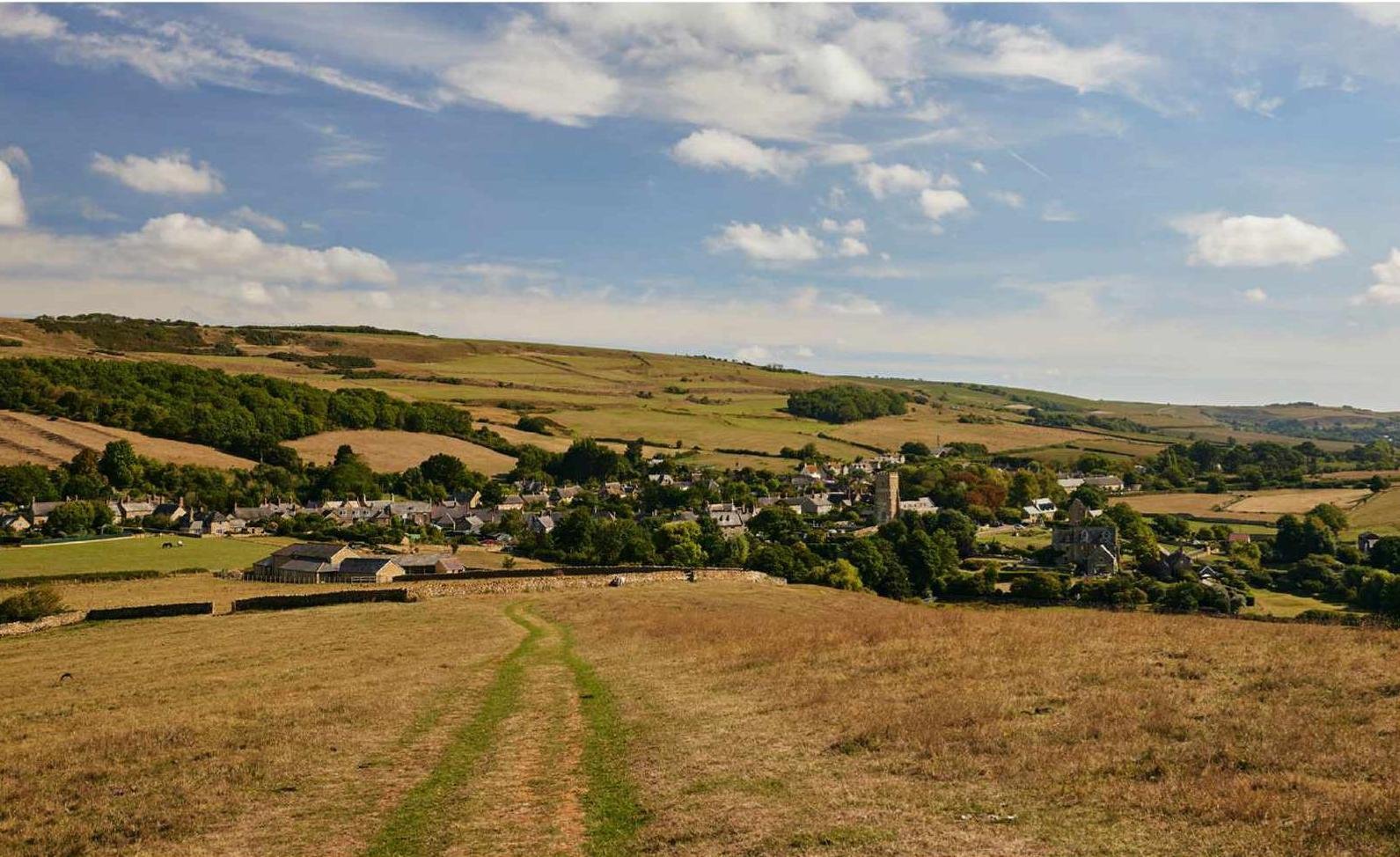
PUBS AND CAFES
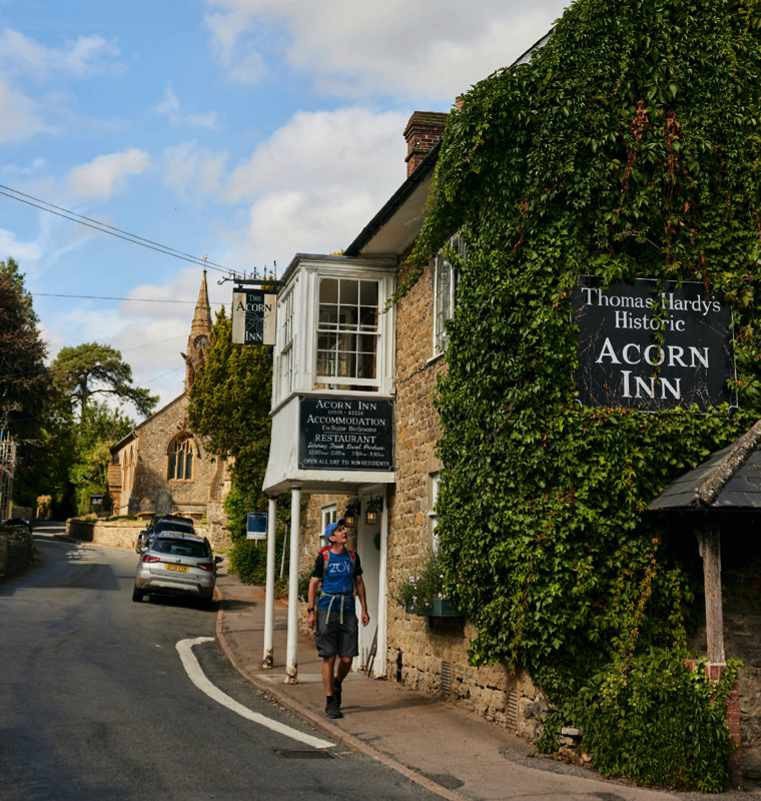
Acorn Inn Evershot
For an infusion of Hardy, stop by at Evershot’s Acorn Inn, a fine 16th-century coaching establishment that featured in Tess of the d’Urbervilles. acorn-inn.co.uk
The Camelot South Cadbury
The garden at The Camelot, nestled under Cadbury Castle, is the ideal spot for some refreshment after the climb up to the hill fort. houseofcamelot.co.uk
HiVe Café Weymouth
You can celebrate your arrival in Weymouth or enjoy an energising snack and a cuppa at the HiVe Café on Park Street.
HERITAGE SITES EN ROUTE
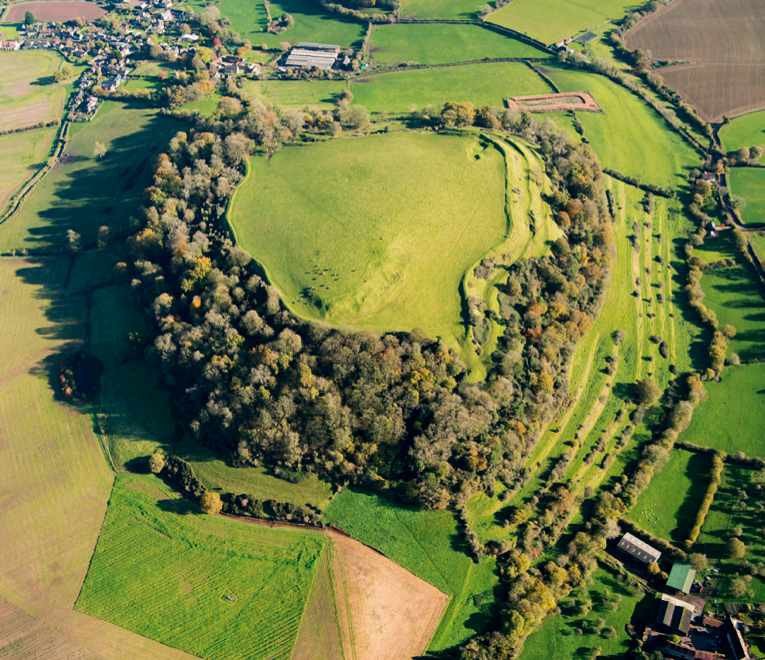
Wells Cathedral has been called “Europe’s first truly Gothic structure.” wellscathedral.og.uk
Bishop’s Palace has been the residence of the local prelate for the past 800 years. bishopspalace.og.uk
Cadbury Castle is open at all times and is free to visit.
Sherborne Castle was built by Sir Walter Raleigh and the gardens laid out by Capability Brown. sherbornecastle.com
MUSEUMS
A wealth of museums bring local history to life. You could visit Weston Museum (westonmuseum.org; free), Cheddar’s Museum of Prehistory (cheddargorge.co.uk), Wells and Mendips Museum (wellsmuseum. org.uk), Castle Cary Museum (castlecarymuseum.org.uk; free), Sherborne Steam and Waterwheel Centre (sswc.co.uk), Sherborne Museum (sherbornemuseum. co.uk; free) and Weymouth Museum (weymouthmuseum.org.uk; free).

Abbotsbury Swannery
The only place on the planet where you can wander through a managed colony of mute swans. abbotsbury-tourism.co.uk/swannery